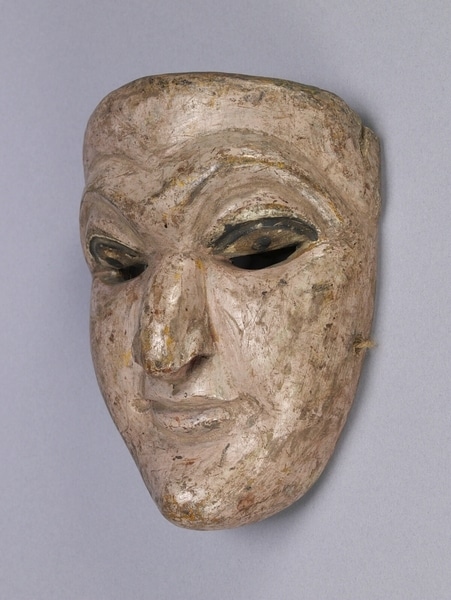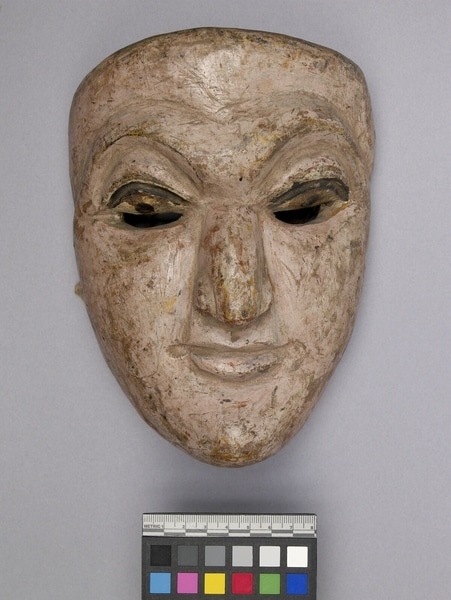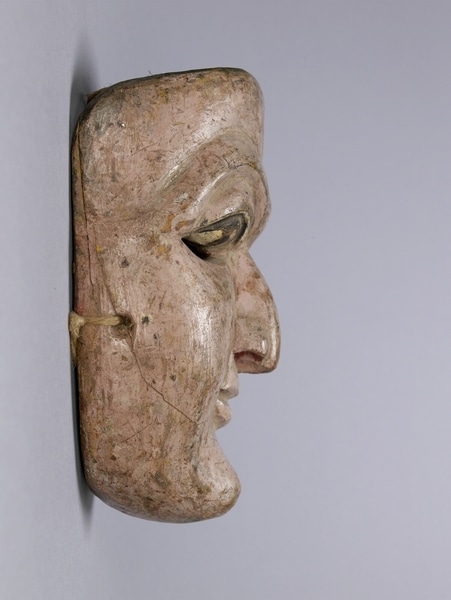Mask Item Number: Eh117 from the MOA: University of British Columbia




Description
Mask depicting a light greyish pink humanoid face with a raised brow ridge that shows the remains of painted black eyebrows, eyes that slant inwards under thick lids, a curved nose with small notstrils, a small mouth, and a protruding chin. There are two crescent-shaped holes, one under each eye, and two holes at the edge of the mask on either side. Twine made of plant fibre runs between the holes, and another length of twine is nailed to the mask at the top centre on the reverse side.
History Of Use
Used in part of the Sokari, a folk drama performed in inland villages, usually serving no purpose but entertainment. In some areas there are religious connotations, where performers make a vow to the local goddess, Pattini, and alms are given in her honour at the end of the season. The plot concerns the travels of Guru Hami, his wife, Sokari, and servant, Paraya, who settle down in Sri Lanka. Vedarala is a comic character portrayed often as a lame old man, pot-bellied and hunch-backed, who nevertheless manages to seduce the beautiful Sokari while attempting to cure Guru of snake bite.
Iconographic Meaning
Simple human features suitable to the character of Vedarala, a village physician.
Cultural Context
folk comedy; drama
Item History
- Made in Sri Lanka before 1984
- Collected during 1983
- Owned by Sandigiri
- Owned by Jason Schoonover before June 21, 1984
- Received from Museum of Anthropology Shop Volunteers (Funding source) and Jason Schoonover (Seller) on June 21, 1984
What
Who
- Culture
- Sinhalese
- Previous Owner
- Sandigiri and Jason Schoonover
- Received from
- Museum of Anthropology Shop Volunteers (Funding source) and Jason Schoonover (Seller)
Where
- Holding Institution
- MOA: University of British Columbia
- Made in
- Sri Lanka
When
- Creation Date
- before 1984
- Collection Date
- during 1983
- Ownership Date
- before June 21, 1984
- Acquisition Date
- on June 21, 1984
Other
- Condition
- fair
- Accession Number
- 0972/0007